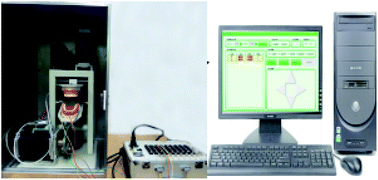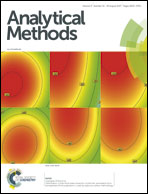Research on a beef tenderness detection method using a bionic mastication system based on a pressure sensor
Abstract
Beef tenderness is a significant factor which influences consumer purchase opinion. Conventional assessment of tenderness requires lengthy procedures with tedious sample preparations. An objective and rapid bionic mastication system combined with a pressure sensor and strain gauge for assessing beef tenderness was developed in this study. Samples of the mid-region of each longissimus dorsi (LD) were placed in the mastication system, and the reaction force was converted into voltage by a pressure sensor in tandem with a strain gauge and used to predict beef tenderness. Sensory evaluation and Warner–Bratzler Shear Force (WBSF) evaluation of samples from the same LD muscle were used for comparison and this system's accuracy rate was verified to be 92.86% and 97.14%, respectively. In addition, pork longissimus muscles and chicken breast were detected by this system. The results were compared with sensory evaluation and WBSF evaluation as well, the accuracy of which reached 90.00% or even higher. The novel bionic mastication system in tandem with a pressure sensor for beef tenderness detection has a high accuracy. What's more, the testing time of each sample is less than 2 minutes. As a result, this system is capable of beef tenderness detection with inexpensive price, operational convenience, stability, celerity and high accuracy. Besides, this system can detect the tenderness of pork and chicken as well, which means that the system has universality.



 Please wait while we load your content...
Please wait while we load your content...